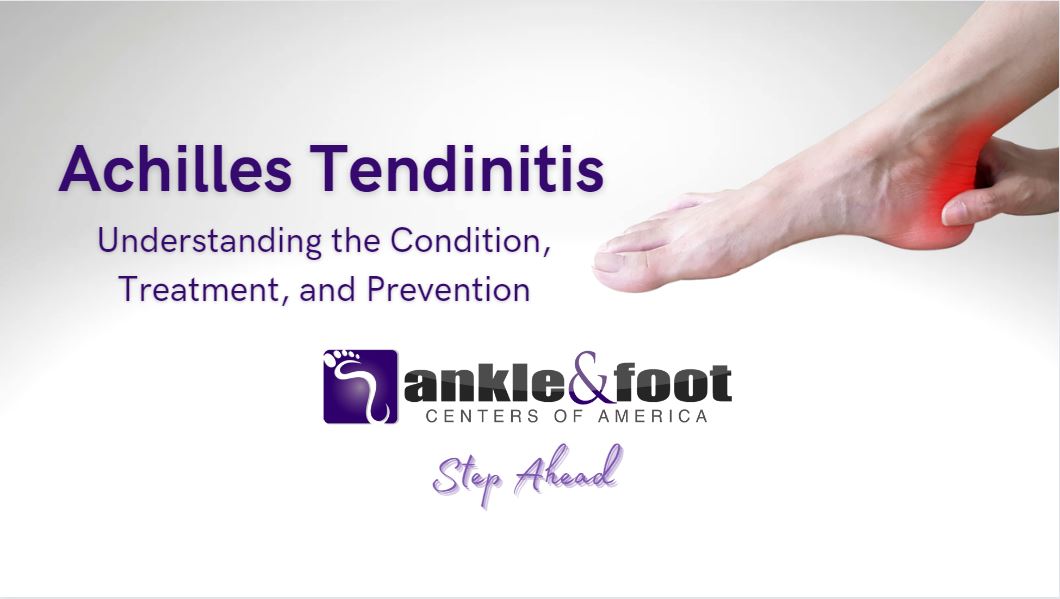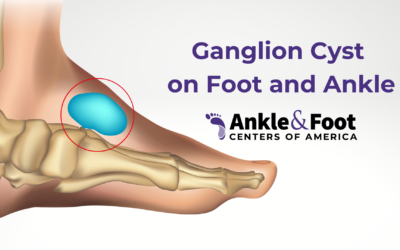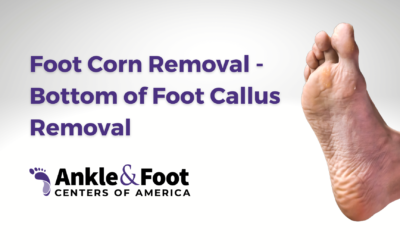Achilles tendinitis in Nashville is a common condition that occurs when the Achilles tendon, which connects the calf muscles to the heel bone, becomes inflamed. The condition often causes pain and stiffness in the heel and lower leg, and if left untreated, it can lead to more serious problems like ruptured tendons. Proper treatment is essential to prevent the condition from worsening and to allow for a full recovery.
What is Achilles Tendonitis?
Achilles tendonitis is a condition in which the Achilles tendon, which runs from the calf muscles to the heel bone, becomes inflamed. It is typically caused by overuse and repetitive strain on the tendon. This can happen from activities such as running, jumping, or dancing. It can also be caused by tight calf muscles, poor footwear, or flat feet.
Why is Proper Treatment Important?
 If left untreated, Achilles tendonitis can lead to more serious problems, such as a ruptured tendon. Proper treatment can help alleviate pain, reduce inflammation, and promote healing. It can also help prevent the condition from worsening, which can lead to longer recovery times and more invasive treatment options. It’s important to seek proper medical attention if you are experiencing symptoms of Achilles tendonitis.
If left untreated, Achilles tendonitis can lead to more serious problems, such as a ruptured tendon. Proper treatment can help alleviate pain, reduce inflammation, and promote healing. It can also help prevent the condition from worsening, which can lead to longer recovery times and more invasive treatment options. It’s important to seek proper medical attention if you are experiencing symptoms of Achilles tendonitis.
Causes of Achilles Tendonitis
Achilles tendonitis in Nashville, TN can be caused by a number of factors, including overuse, tight calf muscles, poor footwear, high-impact sports, and flat feet. Understanding the underlying causes can help prevent the condition from occurring in the first place.
- Overuse: One of the most common causes of Achilles tendonitis is overuse. Activities that involve repetitive strain on the Achilles tendon, such as running or jumping, can lead to inflammation
 and pain. It’s important to allow time for rest and recovery in between intense activities to prevent overuse injuries.
and pain. It’s important to allow time for rest and recovery in between intense activities to prevent overuse injuries. - Tight Calf Muscles: Tight calf muscles can put additional strain on the Achilles tendon, leading to inflammation and pain. Stretching exercises that target the calf muscles can help alleviate tension and reduce the risk of developing Achilles tendonitis.
- Poor Footwear: Wearing shoes that don’t provide proper support can also increase the risk of developing Achilles tendonitis. Shoes that are too tight or lack proper arch support can put additional strain on the tendon. It’s important to choose footwear that fits properly and provides adequate support for your feet.
- High-Impact Sports: Participating in high-impact sports like basketball, volleyball, or tennis can also increase the risk of developing Achilles tendonitis. The repeated jumping and quick directional changes can put additional strain on the tendon. It’s important to take proper precautions, such as warming up properly and wearing proper footwear, to prevent injury.
- Flat Feet: People with flat feet or fallen arches may also be at a higher risk of developing Achilles tendonitis. Flat feet can cause the foot to roll inward, putting additional strain on the tendon. Custom orthotics or supportive footwear can help alleviate this issue and reduce the risk of injury.
Treatment Options
There are several treatment options in Nashville available for Achilles tendonitis, ranging from rest and pain management to physical therapy and surgery. The best treatment plan will depend on the severity of the condition and the individual’s specific needs.
the condition and the individual’s specific needs.
- Rest and Ice: One of the most important components of treating Achilles tendonitis is rest. This means avoiding activities that put strain on the tendon and allowing time for it to heal. Applying ice to the affected area can also help reduce inflammation and alleviate pain.
- Pain Management: Over-the-counter pain relievers, such as ibuprofen or acetaminophen, can help alleviate pain associated with Achilles tendonitis. Topical creams and gels, such as menthol or lidocaine, can also provide temporary relief. Gentle stretching exercises can also help alleviate pain and improve flexibility.
- Physical Therapy: Physical therapy can be an effective treatment option for Achilles tendonitis. Strengthening and stretching exercises can help improve flexibility and reduce the risk of re-injury. Physical therapists can also provide guidance on proper form and technique for activities like running and jumping.
- Footwear and Orthotics: Wearing proper footwear and using custom orthotics can help provide support and reduce strain on the Achilles tendon. Shoes that fit properly and provide adequate arch support can help prevent the condition from worsening. Custom orthotics can also help correct any underlying issues, such as flat feet or fallen arches.
- Surgery: In severe cases of Achilles tendonitis, surgery may be necessary. There are several surgical options available, including removal of damaged tissue, tendon transfer, or lengthening of the calf muscles. Surgery is typically considered a last resort and is only recommended in cases where other treatment options have failed.
It’s important to seek proper medical attention for Achilles tendonitis to prevent the condition from worsening and to allow for a full recovery.
Achilles Tendonitis Treatment at Home
In addition to medical treatment, there are several things you can do at home to help alleviate the symptoms of Achilles tendonitis and promote healing.
- Rest and Ice Rest is crucial for allowing the Achilles tendon to heal. Avoid activities that put strain on the tendon, such as running or jumping, and allow time for it to recover. Applying ice to the affected area for 15-20 minutes at a time, several times a day, can also help reduce inflammation and alleviate pain.
- Stretching and Strengthening Exercises Gentle stretching and strengthening exercises can help alleviate pain and improve flexibility. These exercises should be done under the guidance of a medical professional or physical therapist to ensure proper technique and avoid further injury.
- Footwear and Orthotics Wearing proper footwear and using custom orthotics can help provide support and reduce strain on the Achilles tendon. Shoes that fit properly and provide adequate arch support can help prevent the condition from worsening. Custom orthotics can also help correct any underlying issues, such as flat feet or fallen arches.
It’s important to listen to your body and avoid activities that cause pain or discomfort. Gradually increasing activity levels and intensity, under the guidance of a medical professional or physical therapist, can help prevent re-injury and promote a full recovery.
Prevention
Preventing Achilles tendonitis is key to avoiding the pain and inconvenience associated with the condition. There are several steps you can take to reduce your risk of developing Achilles tendonitis.
- Proper Warm-Up and Stretching Proper warm-up and stretching before engaging in physical activity can help reduce the risk of injury to the Achilles tendon. This should include stretching exercises that target the calf muscles and the Achilles tendon.
- Gradual Increase in Activity Level Avoid sudden increases in activity levels, as this can put additional strain on the Achilles tendon. Gradually increasing the duration and intensity of physical activity can help reduce the risk of injury.
- Proper Footwear and Support Wearing proper footwear with adequate arch support can help reduce strain on the Achilles tendon. Custom orthotics can also provide additional support and correct any underlying issues, such as flat feet or fallen arches.
 By taking these preventive measures, you can reduce your risk of developing Achilles tendonitis and other injuries. If you do experience pain or discomfort in the Achilles tendon, it’s important to seek medical attention and allow for proper rest and recovery.
By taking these preventive measures, you can reduce your risk of developing Achilles tendonitis and other injuries. If you do experience pain or discomfort in the Achilles tendon, it’s important to seek medical attention and allow for proper rest and recovery.
Conclusion
Achilles tendonitis can be a painful and debilitating condition, but with proper treatment and prevention, it can be managed effectively.
If you experience pain or discomfort in the Achilles tendon, it’s important to seek medical attention. A podiatrist near you can properly diagnose the condition and recommend the best treatment options.
Taking steps to prevent re-injury, such as proper warm-up and stretching before physical activity, gradual increases in activity levels, and wearing proper footwear and support, can help reduce the risk of developing Achilles tendonitis again in the future.
By following these recommendations and working with a podiatrist, individuals can effectively manage Achilles tendonitis and continue to engage in physical activity without pain or discomfort.




